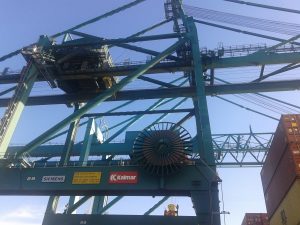Trouble shooting a Noisy Gearbox
Trouble shooting a Noisy Gearbox
This is we think another Notes from the Lab with some very interesting info, Trouble shooting a Noisy Gearbox has cost a lot of people a lot of time and ….
Whether it is a stationary gearbox, a differential or a transmission, a gearbox making an abnormal noise usually is a warning sign of a problem. There is a certain amount of noise to be expected in a manufacturing environment and less in an automotive system. The noise can range from a whine to banging and clunking depending upon the problem and level of damage. Sound waves generated by vibration in the gearbox are detected by the human ear and defined as noise when it is out of the ordinary.
There are several factors that will influence the sound a gearbox makes including type of gear teeth, load, speed, gear tooth geometry, surface finish, and of course, the lubricant. In some cases, changing the gear type (for example going from a spur to a helical) may resolve the issue, however be sure to check with the OEM prior to making such changes. Specially equipped shops and OEM’s can change the tooth geometry and thereby reduce noise by smoothing the contact surfaces.

Variety of sources
Noise can be generated from a variety of sources and must be addressed for continued equipment life. Some of these are:
- Shaft misalignment: Shafts from the drive motor, inputs and outputs from couplings, speed reducers, or gearboxes should be checked. There are very accurate methods available for alignment procedures that are far better than line of sight. Misalignment may have been present at start-up or developed over time.
- Coupling Wear: Usually due to shaft misalignment, poor lubrication, or excessive wear.
- Tooth Damage: A visual inspection of damaged, broken, or worn teeth. Also look for pitting from corrosion and poor lubrication. Usually indicated by a rumbling or grinding noise.
- Water in the Gearbox: Water can attack the metal surface causing pitting and abnormal wear. Water should be removed frequently.
- Bearings: A low pitch growling or rumbling is usually a sign of a damaged roller element in a bearing. Measure the axial float to see if it is still within specification then check for surface damage.
- Surface damage: Marks and bumps may occur during installation or repairs and may show up as small shiny spots.
- Loose foundation bolts: Bolts, screws, and other means to attach the equipment to a foundation may become loose over time due to vibration. Check fasteners for proper torque and tightness.
- Moving foundation: The foundation the equipment is attached to may be flexing, vibrating or moving which can cause misalignment and other issues.
- Operational specifications: Most equipment is designed to operate within certain speeds and loads. Operating above or below those limits can produce erratic noises, equipment damage, and may show up at start up or after upgrades.
- Lubrication: Old, contaminated, or the wrong lubricant can cause tooth, bearing and overall equipment damage. Make sure the proper viscosity and performance oil is used for optimum equipment life.
SWEPCO 200 series gear oils often offers an easy solution
There is always the temptation to use a more viscous oil to help reduce noise. Using a thicker oil may cause internal friction, excessive heat, foaming, etc. thereby causing more problems than it solves. Always use the OEM recommended oil viscosity and performance level if known. Using a higher quality gear oil may resolve those issues. SWEPCO 200 series gear oils along with SWEPCO products will help extend the life of most equipment. SWEPCO 201, 202, 203, 210 and 212 all meet DIN 151517 part III and other new specifications. SWEPCO 200 series gear oils has saved a lot of gear boxes from a lot of wear and maybe even more important, reduced downtime significantly. Trouble shooting a Noisy Gearbox might be easier than you might have thought!
As always, contact your Sales Agent if you have any questions.
Source: SWEPCO



